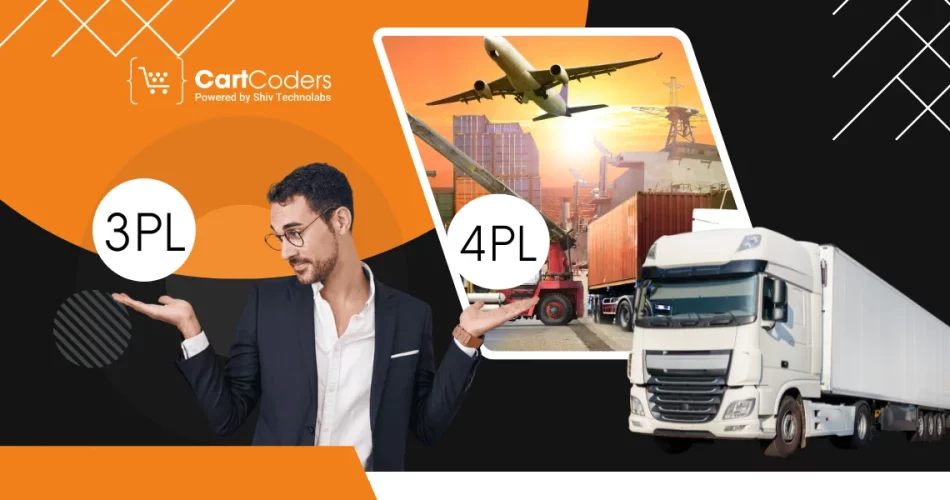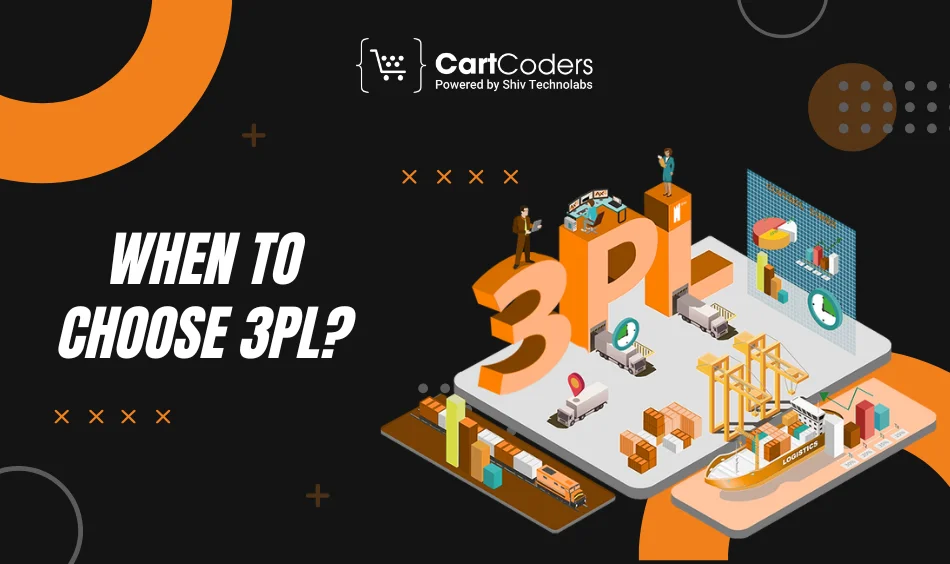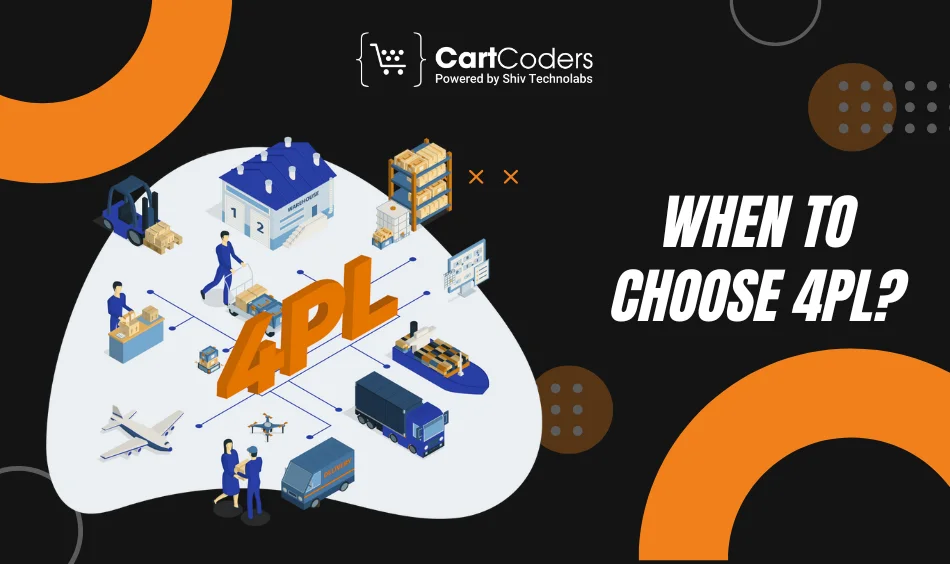Custom Engagement Solutions
Unlock tailored solutions with a free, no-obligation strategy session.
Expert Developers & Engineers on Demand
Scale Your Team with Skilled IT Professionals
Expert Guidance for Digital Transformation

As your eCommerce business grows, shipping and order fulfillment become more complex. You might start by handling orders in-house, but at some point, it becomes too much to manage alone. That’s when companies start looking into outsourcing logistics.
You’ve probably come across two terms: 3PL and 4PL.
Both are logistics partners, but they offer different types of services. Choosing the right one can affect your costs, speed, and customer satisfaction.This blog will explain what 3PL and 4PL mean, how they work, and which one might be the better fit for your eCommerce business.
3PL stands for third-party logistics. A 3PL company handles some or all of the logistics functions for your business. This usually includes warehousing, packing, and shipping your products.
Think of a 3PL as a company that helps you get products from your warehouse to your customers without you needing to run a warehouse yourself.
You still manage your inventory and work directly with the 3PL provider to move products. They don’t take over your supply chain, but they help manage parts of it.
Examples of what a 3PL might do:
If you’re running an eCommerce store and getting too many orders to manage on your own, a 3PL can be a practical solution.

A 3PL is a good choice when:
Using a 3PL is often the first step when moving from doing everything in-house to working with outside help.
It’s great for businesses that want support but still want to be involved in decisions like shipping methods, inventory placement, and returns management.
You still run the show — the 3PL just handles the hands-on work.
Let’s look at the benefits and drawbacks of each option:
✅ Pros of 3PL:
⛔️ Cons of 3PL:
4PL stands for fourth-party logistics. A 4PL company goes one step further than a 3PL. Instead of just handling logistics tasks, they take charge of your entire supply chain.
A 4PL provider manages your inventory, coordinates with multiple 3PLs and carriers, and makes sure everything runs smoothly from your supplier to your customer.
They act like a manager who oversees all the moving parts, not just one warehouse or one courier. You hand off the planning, coordination, and technology to them.
A 4PL might:
You don’t need to coordinate every detail — the 4PL does that for you.

A 4PL is the better choice when:
4PLs are ideal for larger eCommerce businesses or companies looking to scale quickly.
If you’d rather focus on product, marketing, or customer service, and let experts handle the entire logistics chain, 4PL gives you that freedom.
They become your logistics partner, not just a service provider.
✅ Pros of 4PL:
⛔️ Cons of 4PL:
The biggest difference is how much control and involvement each type of provider has in your logistics.
Here’s a breakdown of the key differences:
| Feature | 3PL | 4PL |
| Main role | Service provider | Supply chain manager |
| Who do they report to | You | You, but they manage other providers |
| Warehousing | Yes | Sometimes, but usually outsourced |
| Carrier selection | You or the 3PL | The 4PL does it |
| Order fulfillment | Yes | Manages it through a 3PL |
| Supply chain strategy | No | Yes |
| IT and data integration | Basic | Advanced |
| Ideal for | Mid-sized businesses | Larger, multi-layered operations |
The right choice depends on your business size, growth stage, and how involved you want to be in logistics.
Choose 3PL if:
Choose 4PL if:
Startups and small eCommerce brands usually start with 3PL. As things grow more complex, switching to a 4PL can save time and reduce mistakes, especially when paired with strong Shopify integration solutions that keep everything connected.
Understanding the difference between 3PL and 4PL becomes much clearer when we look at real businesses and how they manage their eCommerce logistics.
These examples show how companies of different sizes and models benefit from third-party or fourth-party logistics providers.
These cases offer real insight into how choosing the right logistics model can support business growth, order volume, and delivery reliability.
Gymshark, a global fitness apparel brand, started as a small operation in the UK. As the company grew rapidly through social media marketing and influencer partnerships, fulfilling orders in-house became a major challenge.
Here’s how they scaled with a 3PL:
By working with a 3PL, Gymshark was able to keep pace with demand during high-sales periods like Black Friday without overloading its internal team.
Unilever, a multinational company with thousands of SKUs and suppliers, relies on a 4PL model to manage its global supply chain. Given the complexity of managing products across continents, Unilever needed more than warehousing support.
How they work with a 4PL:
In this case, the 4PL is not just executing shipments but also helping Unilever plan, oversee, and improve its entire logistics network.
Casper, the online mattress brand, began with a basic 3PL setup to ship mattresses across the US. As demand grew and the company entered new markets, logistics became more complex.
How Casper adjusted its logistics:
Casper’s transition from 3PL to 4PL shows how logistics needs evolve with growth and international expansion.
H&M, one of the largest fashion retailers in the world, uses a 4PL model to manage its large-scale eCommerce and retail logistics operations.
Key elements of their 4PL setup:
H&M’s logistics setup is designed for high-volume, multi-channel fulfillment — something only a 4PL provider can manage efficiently.
CartCoders helps eCommerce brands integrate their Shopify stores with trusted 3PL and 4PL partners. We set up the tech, so your orders, inventory, and shipping data stay in sync without the hassle.
Looking to connect your store with a fulfillment provider? See our Shopify 3PL integration service to get started.
Here’s what we take care of:
Let CartCoders handle the backend while you run your business with fewer logistics headaches.
Choosing between 3PL and 4PL is about more than just price. It’s about how much help you need, how fast you’re growing, and how involved you want to be in your shipping and supply chain.
Start small with a 3PL if your needs are simple. Move to a 4PL when things get complex.No matter which route you choose, CartCoders is ready to support your journey with the right tools, tech, and experience to keep things running smoothly. Contact us today!
Projects delivered in 15+ industries.
95% retention rate, building lasting partnerships.
Serving clients across 25+ countries.
60+ pros | 10+ years of experience.